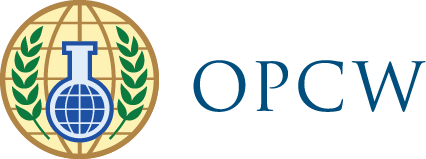“Joint Assistance 2005”, a major field exercise, planned and coordinated jointly by the Government of Ukraine, the Organisation for the Prohibition of Chemical Weapons (OPCW), and the North Atlantic Treaty Organization’s (NATO) Euro-Atlantic Disaster Response Coordination Centre (EADRCC), has commenced at the Yavoriv Training Area near L’viv, Ukraine.
More than 1,000 assistance coordination, rescue and relief experts, as well as evaluators and support staff from Ukraine, ten OPCW Member States, and nine Euro-Atlantic Partnership Council (EAPC) nations, have assembled to test and refine international cooperation procedures to deliver emergency assistance, following a simulated terrorist attack using a chemical agent. The assistance coordination and chemical consequence management field exercise “Joint Assistance 2005” will conclude on 13 October 2005.
The exercise began on Sunday, 9 October 2005, with a demonstration by the Counter-Terrorism Centre of the Security Service, Ukraine, followed by the formal opening of the exercise. General Volodymyr Tymoshenko, First Deputy Head of the Security Service and Head of the Anti-Terrorist Centre of Ukraine; Mr Brian Hawtin, OPCW Deputy Director-General; and Mr Carsten Fausbol, Head, Civil Emergency Planning, NATO, jointly opened the exercise.
In his welcoming remarks to the representatives of more than sixty countries, Deputy Director-General Hawtin underscored the need for a cooperative strategy to respond effectively to the potential threat of chemical terrorism by delivering and coordinating effective assistance following a chemical attack in order to save lives and reduce suffering. He noted that Joint Assistance 2005 is designed to improve these capabilities for the mutual benefit of the Member States of the OPCW and the Euro-Atlantic Partnership Council. Mr Hawtin expressed his gratitude to Ukraine for their commitment as host country, as well as to NATO and the EADRCC and all of the participating nations that have taken on the considerable burden of providing personnel and material to create a realistic and challenging exercise scenario.
Participants from Ukraine, with the support of OPCW and EADRCC experts and resources, will perform chemical reconnaissance, decontamination measures, temporary evacuation, provision of life support to the affected population, delivery of medical care, specialised search and rescue activities, water purification and sampling and analysis activities.
In addition, the OPCW will conduct during the exercise a simulated Investigation of Alleged Use of chemical weapons (IAU).
The United Nations Office for the Coordination of Humanitarian Affairs (UN-OCHA) will establish an On-Site Operations Coordination Centre (OSOCC), which — as part of the scenario — supports the stricken nation in co-ordinating the assistance and international consequence management resources.
In total, representatives from over fifty OPCW and EAPC Member States, including participants and observers, are following the exercise’s activities.
Every nation that has renounced chemical weapons by ratifying or acceding to the Chemical Weapons Convention (CWC) has the right to request and to receive assistance and protection against the use, or threat of use, of chemical weapons in accordance with the provisions the CWC.
The OPCW, now numbering 174 Member States, stands ready to provide such international assistance.
57/2005
